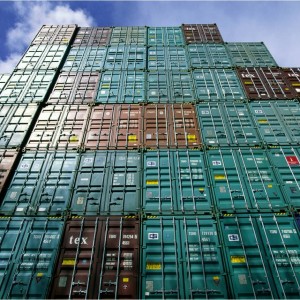Decoding OSRA… New Series
Approaching a year after the bipartisan Ocean Shipping Reform Act of 2022 (OSRA) was signed into law, we’ve only barely begun to see its impact. It’s been loftily described as crucial and the most extensive maritime reform legislation in decades. Indeed, it is the biggest reform of Title 46 of U.S. Code – Shipping. Indeed, OSRA casts a wide net over the ocean shipping sector of international shipping, and needs unpacking.
International shipping news story after news story – whether about carriers and their alliances, detention and demurrage fees, or shippers filing complaints with the Federal Maritime Commission (FMC) – refers to OSRA. But there seems to be disagreement about exactly what OSRA does, and there’s definitely conflict over whether it will ultimately be good or bad for the international shipping industry.

Sometimes, there’s debate over things like the power OSRA grants to the FMC. It appears that will become a prominent part of the fight OOCL has with the bankrupt Bed, Bath & Beyond, which filed a complaint with the FMC against the carrier for tens of millions of dollars.
Unfortunately, there’s a great deal of confusion over OSRA right now. What exactly does it do? What are its implications? It’s not surprising shippers and industry stakeholders have questions or arguments over the law changes brought on by OSRA. There is quite a bit to the legislation: 18 sections to wade through that have to be cross referenced with Title 46 and Title 49.
It could be years before we see whether the bill will accomplish its goals, like that of improving maritime shipping for the U.S. and growing the country’s exports, or if it will be detrimental to the economy, making the pivotal shipping industry more expensive because of increased regulation.
I attempted to have AI help me sort through it, analysing OSRA and cross referencing it with Title 46. What AI spat out sounded good. But as I examined it, I quickly discovered that AI got all kinds of details scrambled. If OSRA confuses the mind of a computer, what chance do us mere mortals have?
Much, much more. Despite terms like intelligence, computers don’t have actual intelligence. They simply do what they are programmed to do. Their computational skills are great, but limited by a lack of consciousness that anyone who’s watched 80’s sci-fi movies pray they’ll never develop.
Disappointed, I had to give up on AI’s ability to sift through the mess that is Congressional writing. That means, I’m going to have to sift through it. In an upcoming series, I’ll go through all the sections of OSRA, giving an overview of how the section reforms U.S. shipping law.
Before diving into the rest, I’ll go ahead and give you the overview of Section 1 right now. Don’t get too excited. I’m doing so because there’s not much to see here but also to make the point that I won’t be skipping over any sections of the legislation.
Section 1: Short Title
Like I said, there’s really not much to see here. This section establishes an official citing for the bill, which is “Ocean Shipping Reform Act of 2022.” Of course, I’m going to keep referring to it as OSRA in the upcoming series. OSRA is how most politicians and shipping industry professionals say it – sounded out rather than spelling out the letters of the acronym – when talking about the law.
Much Bigger and Better to Come…
After Section 1, things get much more complicated, as the legislators went about amending Title 46 and a bit of 49. Hopefully, we’ll be able to get a good grasp of just what our legislators have done with the shipping laws in the process. And maybe, we’ll gain insight into the possible implications, both good and bad, of the changes they’ve made.
So keep your eyes peeled for Universal Cargo’s upcoming blog series… Decoding OSRA.





